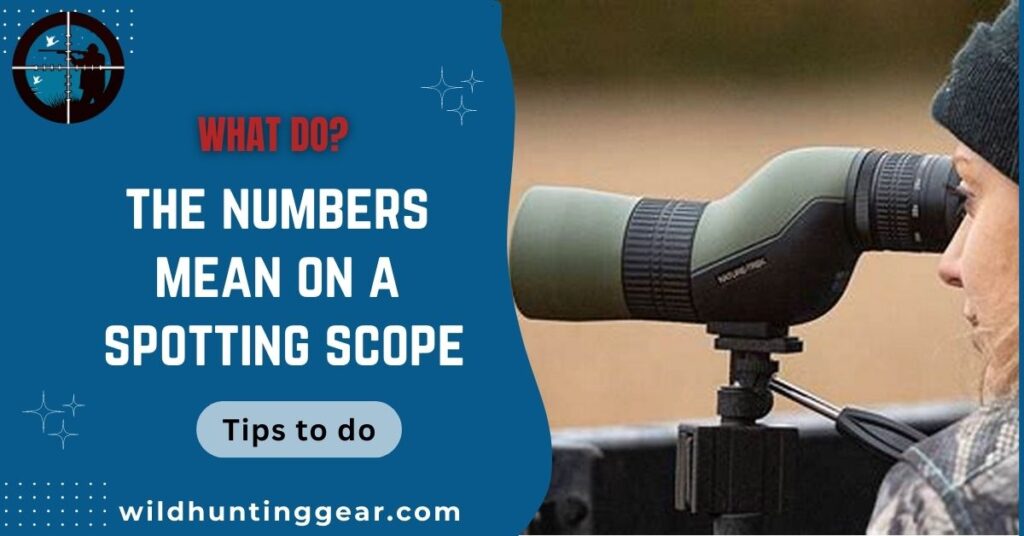Spotting scopes are essential optical tools for various activities such as birdwatching, target shooting and astronomy. However, choosing the right spotting scope can be overwhelming due to the many numbers and markings found on these instruments.
In this article, we’ll explain the meaning behind these numbers, including magnification factor, lens diameter and exit pupil.

What do the numbers mean on a spotting scope?
When it comes to spotting scopes, the numbers are usually arranged in a format like 20-60×80. The first two figures ’20-60′ represent the magnification power of the scope. The ’80’ refers to the diameter (in millimeters) of the objective lens – the lens at the end of the scope.
A. Magnification Power (e.g., 20-60x)
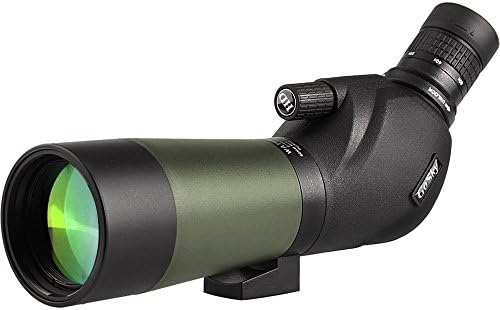
- Explanation of “x” (times) notation: The “x” in the magnification power denotes the number of times an image is enlarged when observed through the spotting scope. For example, if a spotting scope has a magnification of 20x, it means that the image will appear 20 times larger than it would with your naked eye.
- How magnification affects image size and clarity: Higher magnification levels result in larger and more detailed images. However, it’s essential to note that as magnification increases, image brightness decreases and field of view narrows. This is because higher magnification reduces the light gathered by the objective lens.
- Impact of magnification on field of view and image clarity: The impact of magnification on both field of view and image clarity is significant. As the magnification increases, the field of view — the area visible through the scope — decreases. This means that at higher magnifications, while you can see more details, you see less of the overall scene. Furthermore, higher magnification can lead to less clear images, especially in low light conditions or at extreme distances, due to the reduction in light intensity. Therefore, it’s essential to strike a balance between magnification and the field of view to get the most clear and comprehensive view of your subject.
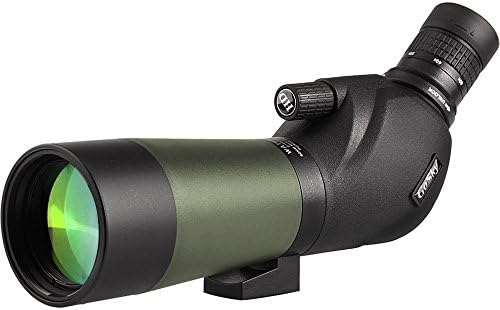
B. Objective Lens Diameter (e.g., 80mm)
- Definition and significance of objective lens size: The objective lens is the front lens of the spotting scope responsible for gathering light. Its diameter, measured in millimeters (mm), significantly affects the scope’s light-gathering ability and image quality, especially in low-light conditions.
- Impact on light gathering ability and low-light performance: A larger objective lens diameter allows more light to enter the spotting scope, resulting in brighter and clearer images, especially in low-light situations, such as dusk or dawn.
Interpreting the Magnification Range
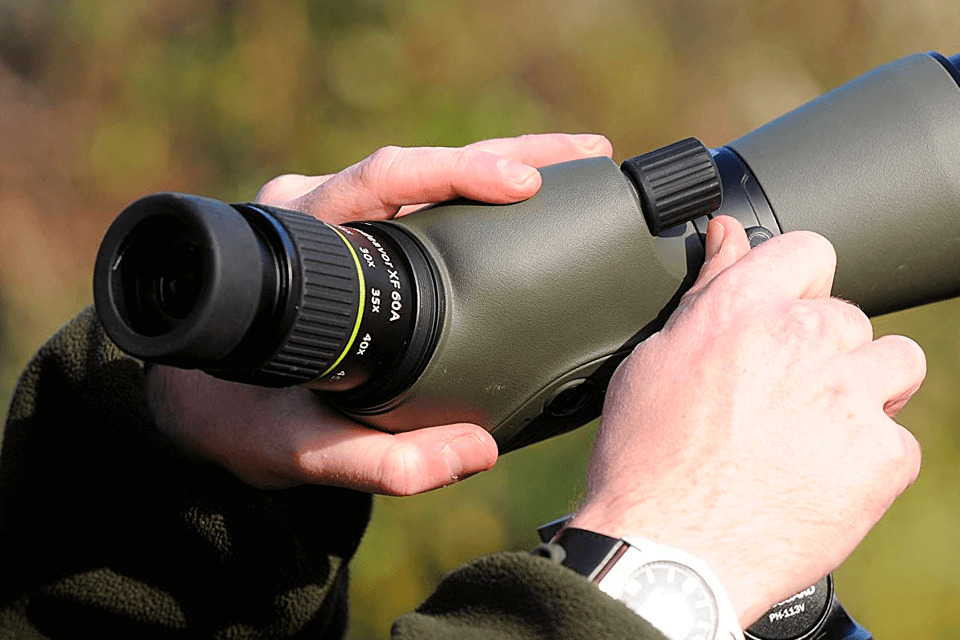
- Advantages and drawbacks of higher magnification: Higher magnification settings allow you to see further and observe finer details in distant objects. However, they also come with drawbacks, such as reduced brightness, narrower field of view and increased image shakiness due to hand movement or atmospheric distortion.
- Best use cases for different magnification settings: Lower magnification settings are ideal for scanning a wide area and tracking moving objects, while higher magnification settings are best suited for detailed observation of stationary targets. Some spotting scopes offer variable magnification, allowing you to switch between low and high settings as needed.
B. Analyzing the Objective Lens Diameter
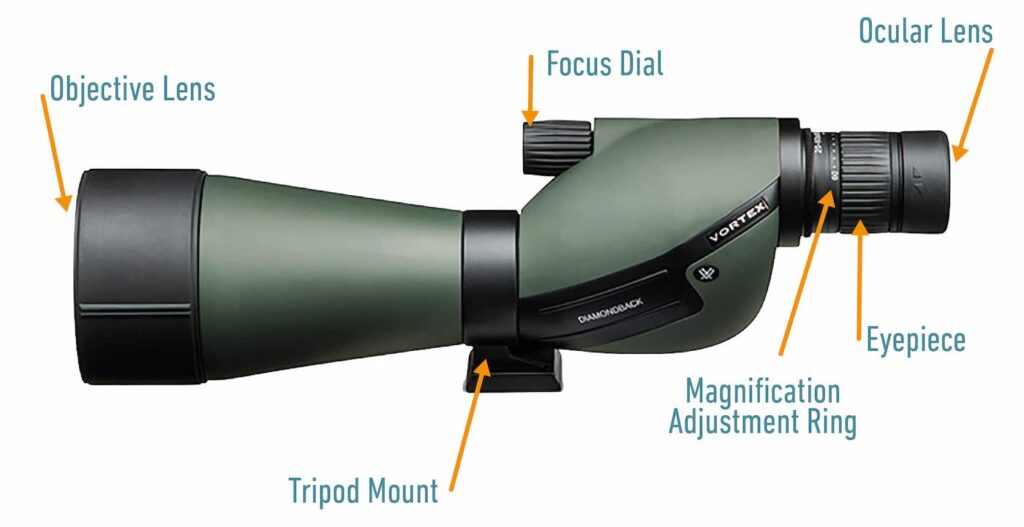
- Relationship between lens size and field of view: A larger objective lens diameter provides a wider field of view, which is essential when scanning a broad area or locating moving targets. However, a larger lens also results in a heavier and bulkier spotting scope, which may not be ideal for long hikes or limited storage space.
- Considering portability and ease of handling with larger lenses: When choosing a spotting scope, consider the trade-off between a larger objective lens and the added weight and bulk. If you require a more portable and lightweight spotting scope, you may have to compromise on the objective lens size.
Understanding Field of View and Eye Relief
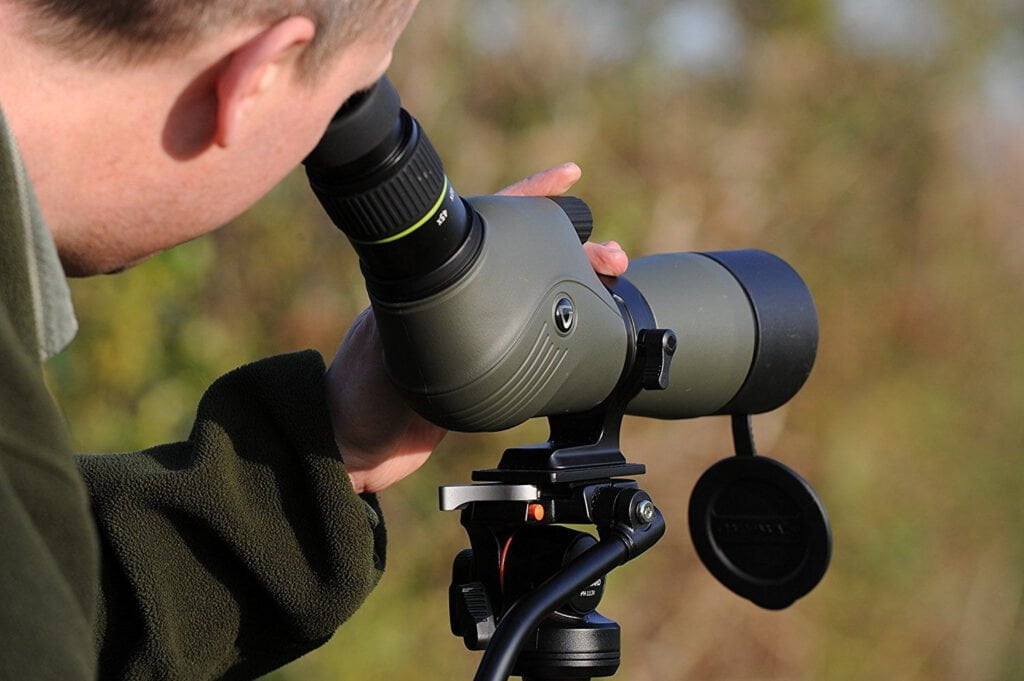
Field of View (FOV) and Eye Relief are two additional considerations when selecting a spotting scope.
- Field of View (FOV): The field of view is the width of the area you can see through the scope at a particular distance (usually 1000 yards/meters). It’s typically indicated in feet or meters at 1000 yards/meters. A broader FOV allows you to observe a larger area, making it easier to locate and track moving targets. However, a wider FOV often comes with lower magnification power.
- Eye Relief: Eye relief is the distance from the last surface of an eyepiece within which the user’s eye can see the entire field of view. It is particularly significant for eyeglass wearers. Longer eye relief provides comfort and prevents eye strain, especially during extended periods of viewing. If you wear glasses, look for a spotting scope with an eye relief of at least 14mm to see the full field of view without removing your glasses.
Understanding these terms will help you choose a spotting scope that fits your individual needs and enhances your viewing experience.
Tips to effectively use spotting scope

● Consider the lighting conditions: Make the most of your spotting scope’s light gathering abilities by using it during optimal daylight hours. In low-light conditions such as early morning or late evening, a spotting scope with a larger objective lens will provide better images.
● Stabilize your scope: To ensure clear, steady viewing, always use a tripod or other stable surface when using your spotting scope, particularly at higher magnification settings.
● Adjust the focus slowly: Take your time to adjust the focus on your spotting scope for a sharper, clearer image. Rapid adjustment can lead to unfocused images or missing important details.
● Start with lower magnification: When initially locating an object, start at a lower magnification to get a wider field of view. Once the object is in sight, you can gradually increase the magnification to see more details.
● Clean your lenses properly: Always use a lens cloth or lens cleaning solution to clean the lenses of your spotting scope. Avoid using your shirt or a rough cloth, which could scratch the lenses.
● Protect your scope: Use the protective covers provided when not using your spotting scope to protect it from dust, debris and damage. Regular maintenance will prolong the life and performance of your spotting scope.
● Practice patience: Lastly, mastering the use of a spotting scope takes time and practice. Spend time familiarizing yourself with your scope and its various settings to get the best possible viewing experience.
Conclusion:
After exploring what the various numbers mean on a spotting scope, it is clear that these details are helpful for finding the perfect scope to observe your surroundings. Spotting scopes can come in quite handy for nature and bird watchers alike, so consider taking a look at all those numerical details.
It can be intimidating at first to wrap your head around unfamiliar numbers, but with a deep breath and an open mind, anyone can become acquainted with their responses when looking through a spotting scope. With its remarkable clarity and increased field of vision, one can have countless hours of enjoyment using one of these devices.
So don’t be overwhelmed by all the unspecified numbers–remember that they are there to assist you in finding the perfect spotting scope! With this newfound knowledge, feel empowered to take time and explore the world around you with more confidence and convenience.
